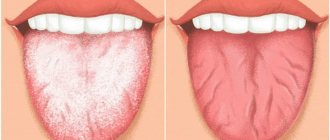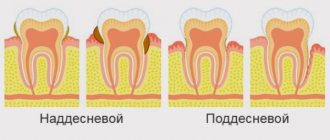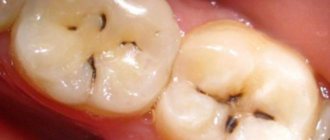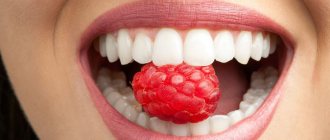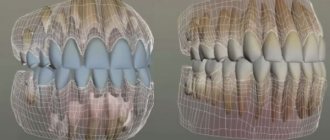It has long been known that toothache is one of the most unpleasant. Sometimes it occurs at the most inopportune moment, for example, at night, when going to the clinic is simply impossible. That is why folk remedies made from improvised ingredients are often used to solve such dental problems.
A real salvation from toothache can be rinsing your mouth with a solution based on soda and salt. The benefits of salt water have been known for a long time - this simple drug effectively disinfects the oral cavity, helps relieve swelling and pain. This and other popular mouthwashes will be discussed in the article.
Indications for hygiene procedures with soda
Baking soda will help get rid of a number of oral problems.
The use of a special liquid for treating teeth is indicated in the following cases:
- for pain in teeth of various origins;
- to remove pathogenic microorganisms that enter the oral cavity along with food and are retained between the teeth;
- to eliminate plaque that lingers on tooth enamel and is caused by prolonged smoking, drinking coffee and strong tea;
- to prevent infections after tooth extraction;
- to prevent the development of inflammatory processes and darkening of tooth enamel, as well as the formation of tartar.
Indications for the use of soda solution are:
- oral candidiasis;
- flux;
- caries;
- stomatitis;
- inflammatory processes of the gums and tongue (gingivitis and glossitis);
- periodontitis.
Note! Despite the harmlessness of water with added liquid, it cannot be used as the main method of therapy: diseases of the teeth and oral cavity must be treated with the assistance of qualified specialists.
Is it possible to rinse your mouth with baking soda?
Baking soda, or sodium bicarbonate, is widely used in dentistry.
Soda rinses are recommended as a therapeutic and preventive procedure in the presence of inflammation in the oral cavity, local foci of infection, toothache and gum problems.
This economical and affordable component is included in most oral hygiene products, which means it is quite capable of replacing them.
Using soda you can avoid complications after dental operations, and also carefully whiten tooth enamel.
Almost everyone can use soda solutions. The main condition is the absence of serious contraindications, proper preparation of the solution and compliance with the rules of rinsing the mouth.
Properties and benefits of soda for teeth - the principle of action of mouth rinse
Baking soda will help relieve toothache.
Baking soda does not have a negative effect on tooth enamel. A rinsing composition based on it has the following beneficial properties:
- has an antiseptic effect, eliminating pathogenic microorganisms;
- whitens the surface of teeth;
- relieves pain;
- makes breath fresh;
- reduces the severity of the inflammatory process.
Important! A composition with a weak concentration of soda can be used even during the period of teething in infants. To relieve pain, this product is lubricated on the gums and tongue.
Water with soda dissolved in it has a pronounced antiseptic effect and also suppresses pain. This product is non-toxic and safe for teeth and mucous membranes of the oral cavity.
Is it possible to rinse your mouth with baking soda during pregnancy?
Pregnant women are more susceptible to inflammatory processes in the oral cavity than others.
Treatment of diseases of teeth and gums should be chosen with special care in order to restore the health of the expectant mother and not harm the child.
Sodium bicarbonate is considered one of the safe therapeutic methods, since it has only a local effect and is not absorbed into the blood.
However, it is strictly forbidden to swallow the solution, otherwise the consequences may be unpredictable.
Some doctors recommend giving up soda altogether in the first trimester, when all the organs and systems of the child are developing.
In general, rinsing with soda can be done in cases where the substance does not cause vomiting or allergic reactions in a pregnant woman. Soda is also used as an alternative to other drugs that a woman does not tolerate well, and in cases of rapid development of the disease as an emergency aid.
Preparation method
The soda solution should be prepared correctly.
Please note that for each mouth rinse procedure, you need to prepare the product anew. The product should be prepared only with warm water: hot liquid can harm the mucous membranes.
To prepare it, you need:
- boil water, cool it to a temperature of 36 degrees;
- pour a teaspoon of soda into a glass of water (200 ml);
- Stir the liquid thoroughly so that there is no sediment left at the bottom.
The finished product must be used immediately after preparation. If the toothache is very severe, you can increase the amount of soda in proportion to two teaspoons. But in this case, you should act with extreme caution: soda can corrode soft tissue.
Rinsing teeth with salt
Salt is a natural antiseptic. It promotes rapid healing of cracks and wounds on the oral mucosa, and also prevents the development of bacteria and stops their harmful effects. The saline solution relieves inflammation and soothes a sore tooth. The liquid penetrates macroscopic cracks and cavities and washes away food debris. Making a mouthwash is easy. Just dissolve table salt (1 tsp) in a glass of warm water.
Salt is one of the effective remedies used in dental treatment.
How to rinse your teeth correctly
It is recommended to use a soda solution as follows:
- take a little prepared product into your mouth;
- rinse;
- treat the area where pain occurs or there is an area of inflammation;
- spit out the used solution;
- change the fluid every 30 seconds.
Note! The total duration of the rinsing procedure does not exceed 5 minutes.
It is not recommended to eat or drink for several hours after the procedure. The solution remaining after rinsing must be poured out, and a new one must be prepared before the next manipulation.
The procedure should be repeated 2-3 times a day. The duration of the course depends on the speed of disappearance of symptoms.
Methods of using soda to treat stomatitis, gumboil, etc.
For various oral problems, soda can be used either in its pure form or in combination with auxiliary ingredients. Most of these recipes are easy to prepare and can be used at home.
In its purest form
Soda solution is primarily recommended as a pre-medical measure for toothache. To prepare the solution you will need 200 grams of warm boiled water, in which 1 tsp should be dissolved. sodium bicarbonate. Make sure that the soda is stirred until completely dissolved - only then can you begin the rinsing procedure, which must comply with the following rules:
- Rinsing is carried out after meals, as well as directly at night.
- It is necessary to rinse your mouth with a soda solution, slightly tilting your head back. Rinse the area where the pain is located especially carefully.
- After rinsing, spit out the liquid and repeat the action 2-5 more times. This will help relieve pain for a couple of hours, but it is better to make an appointment with your dentist as soon as possible to eliminate the cause of this pain.
Even without additional components, soda is an effective assistant.
The same rinsing solution is also relevant for gum inflammation caused by various factors. The method of application is identical to the use of soda solution for toothache, but you will need to rinse every two hours. The inflammatory process is reduced due to the softening of gum tissue, and soda can significantly reduce tissue irritation after the first use.
Stomatitis is another oral disease against which rinsing with soda is effective. The solution can be weakly concentrated (a teaspoon of the product per glass of warm boiled water) or have a high concentration (two teaspoons per glass of water). To quickly get rid of the manifestations of stomatitis, you need to rinse your mouth as often as possible, every 2-3 hours. After rinsing, you should not drink or eat for about half an hour - this is necessary so that the soda continues to have a healing effect.
With flux, rinsing with soda can relieve swelling, relieve pain and eliminate inflammation. Dissolve a teaspoon of powder in a glass of warm boiled water and rinse your mouth every two hours until acute symptoms are eliminated. In the future, you can rinse your mouth 4 times a day after meals until the flux goes away.
Rinsing with a soda solution prepared according to the same principle is relevant as a means of preventing caries, since soda not only cleanses the mouth of food debris, but also creates an environment unsuitable for the growth of bacteria. For such prevention to be as effective as possible, each rinse should last at least 30 seconds. If caries has already affected the teeth, rinsing will only eliminate the pain, and for final treatment you will need to visit the dentist's office.
With auxiliary ingredients: salt, lemon, hydrogen peroxide
Often, to enhance the beneficial properties of soda, traditional medicine recommends adding other ingredients to medicinal formulations. The most popular combination is a soda-salt solution, to create which you will need to mix 1/2 teaspoon of sodium bicarbonate and the same amount of table salt in a glass of warm boiled water. Sometimes a couple of drops of iodine are added to this composition. This remedy is recommended for patients with inflammation in the oral cavity, gumboil, acute toothache, and bleeding gums. Rinsing with the solution will also help those who want to whiten their teeth and prevent caries and infections. In each case, it is necessary to continue rinsing until the desired result is achieved.
Baking soda and lemon are often used to whiten teeth
Combinations of baking soda and other ingredients are often found in the arsenal of those who strive for a snow-white smile. Here are the main compounds that help make your teeth a couple of shades lighter.
- Baking soda + hydrogen peroxide 3%. Mix a small amount of baking soda with 2-3 drops of peroxide until the ingredients form a homogeneous mixture. Apply the resulting paste to the brush and brush your teeth evenly for 3-4 minutes. After the whitening procedure is completed, rinse your mouth thoroughly with water. It is not recommended to use every day.
- Soda + lemon juice. Dip a damp toothbrush into the baking soda until some of the product remains on the brush. Add a few drops of lemon juice on top and brush your teeth as you would with regular toothpaste. This remedy is only suitable for healthy teeth, as it is quite aggressive on the enamel, so it is better to use it rarely - for example, before some important event.
- Soda + strawberries. Take a few ripe berries, mash them to a pulp and mix with soda in equal quantities. Apply to a soft-bristled brush and brush your teeth, then leave the composition in the mouth for another five minutes for a better effect, then rinse your mouth with clean water and brush your teeth again with a paste that should contain fluoride. The product can be used no more than once a week.
- Baking soda + hydrogen peroxide + lemon. Add the same amount of lemon juice to 1/2 teaspoon of baking soda and pour 5 drops of 3% hydrogen peroxide into the resulting mixture. Once you have a homogeneous mass, apply it to your teeth so as not to touch your gums. Leave the whitening solution on for 3-4 minutes, then rinse your mouth with warm water. It is not recommended to apply intense temperature to the teeth for several hours after such a procedure - it increases the sensitivity of the enamel, so that too hot or cold foods and drinks can cause discomfort and toothache.
- Soda + egg white. Separate the white from the yolk and mix it with soda, taken in the amount of one tablespoon. Use the resulting paste to brush your teeth for 5 minutes, then rinse your mouth with clean warm water. This paste can be used every day until the desired result is achieved, after which it can be used occasionally to maintain it.
Features of rinsing for children
Soda is a fairly harmless substance that can be used to improve the health of the oral cavity not only in adults, but also in children. It can bring the first benefit already at the time when the child’s teeth are just beginning to emerge; as a rule, this is accompanied by swollen gums and painful sensations, which is why the child is capricious and restless. In order to eliminate these symptoms, it is necessary to prepare a soda solution (a teaspoon of the product in a glass of warm boiled water) and treat the child’s oral cavity with a gauze swab dipped in this solution.
When teething, baking soda will help the baby
The immune system of an infant is not yet fully formed, and this can often cause the development of oral thrush. A solution of soda (1 teaspoon of soda per glass of water) will also help in this case: if you wash your baby’s mouth with this solution several times a day, the thrush will go away fairly quickly. However, to consolidate the result after the symptoms disappear completely, you will need to use the solution for a couple more days. To prevent thrush from returning, it is recommended to treat objects with which the child often comes into contact with a soda solution - toys, rattles, teethers.
For other oral diseases in children, soda is used in the same way as in adults. However, a method such as rinsing may not be available due to the child’s young age, in which case parents should choose another method of delivering the solution to the affected area - for example, using a gauze swab. Before this procedure, parents need to thoroughly wash their hands (ideally use rubber gloves).
Types of solutions
Other components can be added to a basic solution of baking soda and water to enhance effectiveness.
List of different recipes containing baking soda:
| Compound | Cooking method |
| Soda-salt | You need to take 200 ml of warm water and 10 g of baking soda and kitchen salt. Combine everything and mix thoroughly. Rinse your teeth and mouth three times a day. The solution blocks the proliferation of pathogenic bacteria, heals microtraumas and ulcers, and prevents the deposition of tartar. |
| Soda with iodine | For 200 ml of warm water, take a teaspoon of soda and 6-8 drops of iodine (5%). Connect the components. You should rinse your mouth with this solution every three hours. The maximum allowable period of treatment in this way is 5 days. A solution with iodine has an antimicrobial and healing effect, as well as an analgesic. |
| With added sage | Rinsing your mouth and teeth with a soda solution can be combined with a sage-based decoction. To prepare it, take a tablespoon of dry raw materials, brew 200 ml of boiling water, let the broth brew and cool, then strain. Rinse every 30 minutes to an hour. |
Contraindications
To prevent new pathological conditions from gargling with soda and salt, it is recommended to strictly follow the recipes for preparing solutions. In addition, it is important to remember the contraindications. These include the following:
- weakening of the muscles of the soft palate (due to injury or hemorrhage);
- nephritis;
- early stages of pregnancy;
- stomach ulcer;
- hemorrhagic diathesis;
- gastritis;
- hypertension;
- hypersensitivity to the components of the solution.
Unfortunately, with heavy loads on the ligaments, loss of voice is not uncommon. And not only singers suffer from this, but also teachers, speakers, television and radio presenters. For all of them, the voice is the main working tool, and losing it means losing their job. So what do you do if you can’t say a word? If you lose your voice, GOMEOVOX will come to the rescue. The drug is increasingly used to treat laryngitis and to restore vocal cords. The complex of components that make up GOMEOVOX has an anti-inflammatory effect, but at the moment there is no information about the side effects of the drug.
Benefits and harms
The benefits of treating the mouth and teeth with soda solution were mentioned above. However, this remedy also has negative sides. These include:
- the possibility of vomiting as a reaction of receptors to an irritant;
- overdrying of the mucous membranes of the esophagus and stomach (with frequent use of the solution);
- the possibility of developing an allergic reaction;
- fluid retention in the body, which is associated with the high salt content in soda.
Before using a soda solution, you need to make sure that there are no allergic reactions to its main component.
Preventive measures for gum disease
Remember simple rules for oral health:
- Visit your periodontist (or dental therapist) once a year.
- Brush your teeth twice a day.
- Use dental floss!
- Use special pastes.
- Rinse your mouth after any meal.
- Maintain a healthy lifestyle, watch your diet.
You need to train yourself to take care of your oral cavity from childhood. This habit should become a regular way of your life. Believe me, it is better to follow all the rules than to undergo treatment later!
FAQ
- Do not rinse your mouth on the first day after wisdom tooth removal!
Is it acceptable to rinse your mouth with baking soda after wisdom tooth removal? After wisdom tooth removal, severe pain may persist for some time. But, even despite this, within 24 hours after the manipulation, the oral cavity cannot be rinsed with any solution, since there is a high risk of washing out the protective blood clot from the socket at the site of the extracted tooth. After the specified period, you can rinse.
- Is it possible to rinse an open tooth? Open tooth is a condition that involves opening the tooth to remove the nerve. In this case, rinses are prescribed to provide an antiseptic effect. It is allowed to use a solution of soda.
- What is better for procedures – saline or soda solution? Both of these solutions are effective, but each of them is suitable for a specific case. Baking soda has a greater antiseptic effect, while salt has a healing effect.
- Why is antiseptic treatment of the oral cavity necessary after tooth extraction? After tooth extraction, the treated area remains vulnerable to various infections until healing. To prevent the development of the inflammatory process, you should rinse your mouth with antiseptic solutions.
- How to make soda baths for teeth? Dental baths are a procedure that is almost no different from rinsing. A distinctive feature is the need to keep the solution in the mouth, between the gum and cheek, for up to 40 seconds. In one session, you need to repeat the manipulation up to 4 times a day.
Type of gum after removal (normal) –
How can you determine that your gums are healing normally after tooth extraction? First, open your mouth wide in front of the mirror and see if the hole of the extracted tooth is covered with a blood clot. In the photo below you can see what the holes should look like immediately after removal and after different times.
Under no circumstances should the hole be empty. The latter may indicate that the blood clot has either already fallen out or has not formed at all (this is possible if the doctor used anesthetic solutions with a high vasoconstrictor content during anesthesia). In this case, you need to immediately consult a doctor again. Please note that normally the socket of each tooth will be covered with a dense blood clot (Fig. 5-6).
At first, the surface of the blood clot will be bright red, but within a few days it will become covered with a whitish or yellowish coating (this is fibrin). This is completely normal and does not indicate the development of inflammation. Next, gradual epithelization of the surface of the blood clot will occur (Fig. 7), until the usual gum mucosa appears on its surface. But if the hole is empty, there are food remains in it, there is pain and an unpleasant odor - these are signals of the development of inflammation. We hope that our article was useful to you!
Sources:
1. Higher prof. the author’s education in surgical dentistry, 2. Based on personal experience as a dental surgeon, 3. National Library of Medicine (USA), 4. “Outpatient surgical dentistry” (Bezrukov V.), 5. “Propaedeutics of surgical dentistry” (Soloviev M. .).
Types of inflammatory and dystrophic gum diseases
Inflammatory manifestations include:
- Gingivitis
- Periodontitis
Dystrophic manifestations include:
Gingivitis: signs, causes and treatment
Gingivitis is the first stage of inflammation, in which the integrity of the periodontal junction has not yet been compromised. This disease can be identified by the following signs:
- Swelling of the gums.
- Blood while brushing teeth.
- Pain when eating cold, hot or solid foods.
Improper brushing of teeth, errors during fillings and dentures, improper bite – all this can cause gingivitis. By the way, this is one of the most popular problems that pediatric dentists encounter.
Treatment of gingivitis involves a set of procedures carried out in a dental clinic and at home. If there is dental plaque, it is necessary to carry out ultrasonic cleaning. In addition, you should pay more attention to hygiene: brush your teeth properly and use antibacterial agents.
Periodontitis
Periodontitis is a pathology that occurs as a result of advanced gingivitis. In this case, the swelling of the gums becomes even stronger, they begin to bleed frequently. If left untreated, infection and pus may form. As a result, the bone tissue begins to atrophy, and this leads to increased sensitivity of the teeth, their mobility, and sometimes even loss.
Treatment of periodontitis is prescribed taking into account the course of the disease. At first, procedures such as removing plaque from the enamel and regular brushing of teeth with antiseptic agents may be sufficient. In more serious situations, when the infection has penetrated deep into the bone tissue, surgery may be necessary:
- Partial gum excision.
- Cleaning periodontal pockets.
- Implantation of bone tissue substitutes.
Periodontal disease
Periodontal disease is a systemic disease. As a rule, it is typical for elderly patients. Inflammatory-dystrophic manifestations in this case are concentrated in the periodontal tissue.
Periodontal disease develops at a leisurely pace, gradually erasing tooth enamel. The presence of this disease can be determined by exposed tooth roots and cervical chips of tooth enamel. In most cases, no pain occurs, but if you ignore the problem, you can “lose” your teeth.
To eliminate periodontal disease, it is necessary not only to observe and treat the dentist, but also to related specialists.
Treatment of inflammation at home
The course of treatment of teeth and gums is always selected taking into account the individual characteristics of the disease:
- A type of inflammatory process.
- Neglect of pathology.
- Patient's age.
For example, in adult patients, inflammatory processes most often occur due to chronic diseases. To eliminate the problem, as a rule, pharmaceutical products are required - antiseptics, gels, ointments, antibiotics, toothpastes. If a child’s gums become inflamed, this is almost always associated with teething and herbal medicine, that is, rinsing with herbal decoctions and using other methods of traditional medicine, is sufficient for treatment.
Whatever the situation, adequate treatment is only possible after consultation and diagnosis by a qualified doctor. Remember that the wrong choice of procedures can not only fail to produce results, but also cause painful complications.
Antiseptics
Rinsing with antiseptic agents is the most important step in the fight against inflammatory processes. Let's name well-proven drugs that can be purchased at the pharmacy:
- Malavit - reduces inflammation and prevents its development, but does not eliminate pain effectively enough.
- Kamistad – recommended in the presence of severe pain. It also copes well with swelling.
- Chlorhexidine is a suitable treatment for gingivitis in children. Daily rinsing after meals is recommended.
- Listerine is a good drug for eliminating swelling. Suitable for all types of gum inflammation.
- Stomatophyte is an antiseptic made from natural raw materials: chamomile flowers, oak bark and sage leaves.
- Furacilin is an excellent antimicrobial agent. Penetrates inside the microbial cell, preventing its division.
- Miramistin is an anti-inflammatory drug with a pronounced antimicrobial effect.
